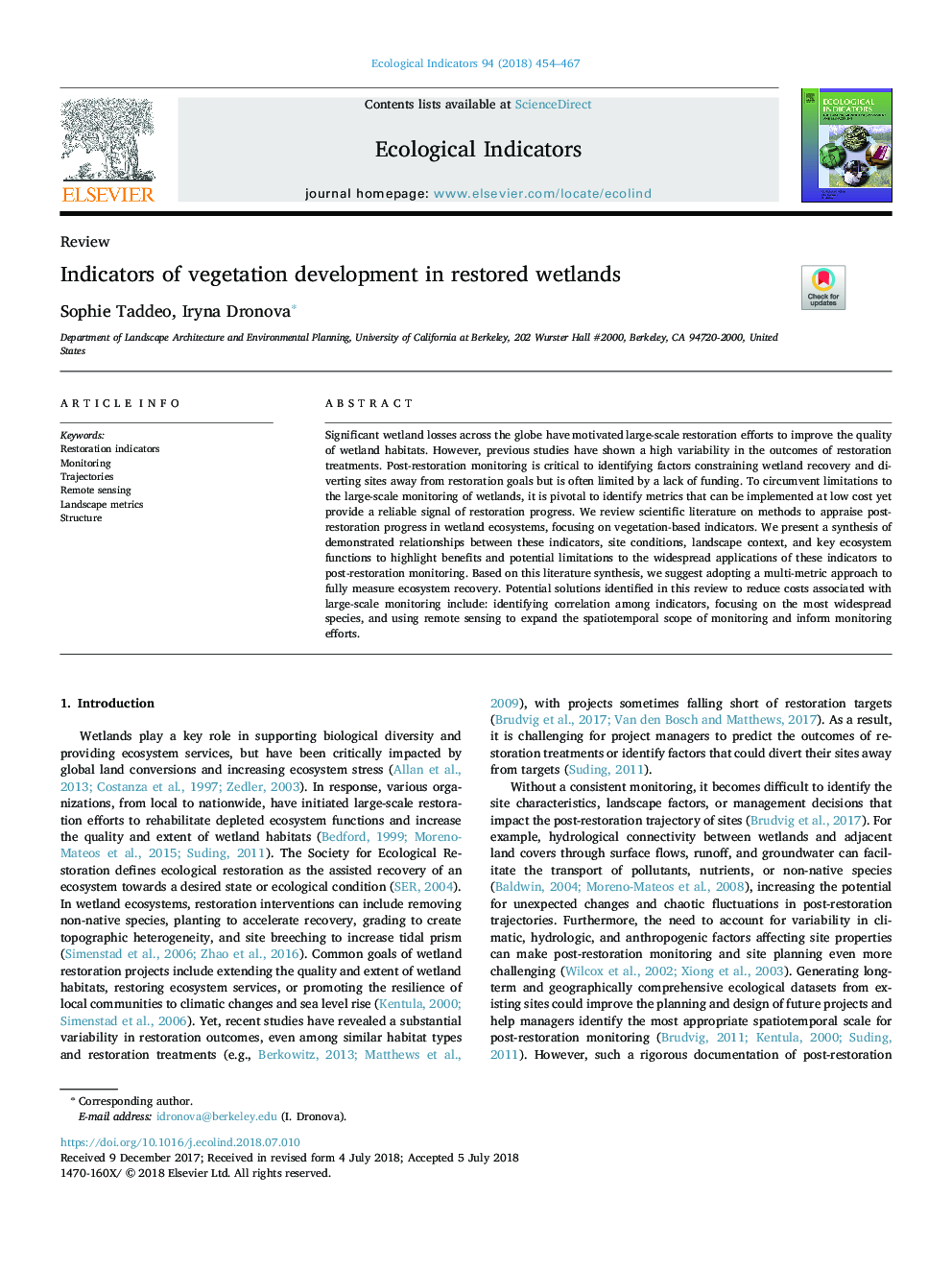| Article ID | Journal | Published Year | Pages | File Type |
|---|---|---|---|---|
| 8845100 | Ecological Indicators | 2018 | 14 Pages |
Abstract
Significant wetland losses across the globe haveâ¯motivatedâ¯large-scaleâ¯restoration efforts to improve the quality of wetland habitats. However, previous studies have shown a high variability in the outcomes of restoration treatments. Post-restoration monitoring is critical to identifying factors constraining wetland recovery and diverting sites away from restoration goals but is often limited by a lack of funding. To circumvent limitations to the large-scale monitoring of wetlands, it is pivotal to identify metrics that can be implemented at low cost yet provide a reliable signal of restoration progress. We review scientific literature on methods to appraise post-restoration progress in wetland ecosystems, focusing on vegetation-based indicators. We present a synthesis of demonstrated relationships between these indicators, site conditions, landscape context, and key ecosystem functions to highlight benefits and potential limitations to the widespread applications of these indicators to post-restoration monitoring. Based on this literature synthesis, we suggest adopting a multi-metric approach to fully measure ecosystem recovery. Potential solutions identified in this review to reduce costs associated with large-scale monitoring include: identifying correlation among indicators, focusing on the most widespread species, and using remote sensing to expand the spatiotemporal scope of monitoring and inform monitoring efforts.
Related Topics
Life Sciences
Agricultural and Biological Sciences
Ecology, Evolution, Behavior and Systematics
Authors
Sophie Taddeo, Iryna Dronova,
